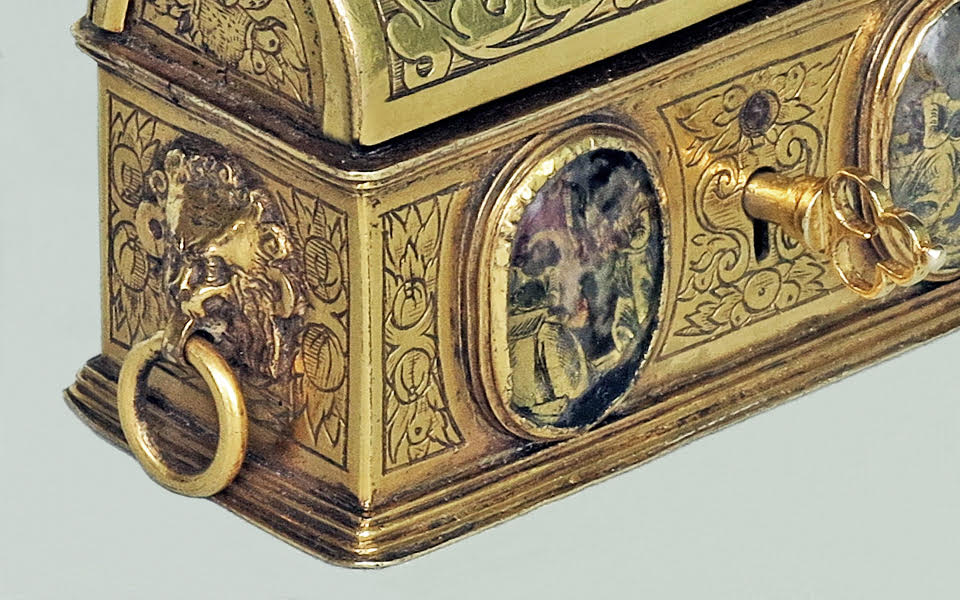
An Outstanding Jewelry Casket
This small and precious rectangular brass casket -completely gilded both outside and inside- shows a stepped base, a domed lid and a front enriched by two reverse-painted oval rock crystals, set into bezels: the left one depicts the Annunciation and the right one depicts the Nativity.
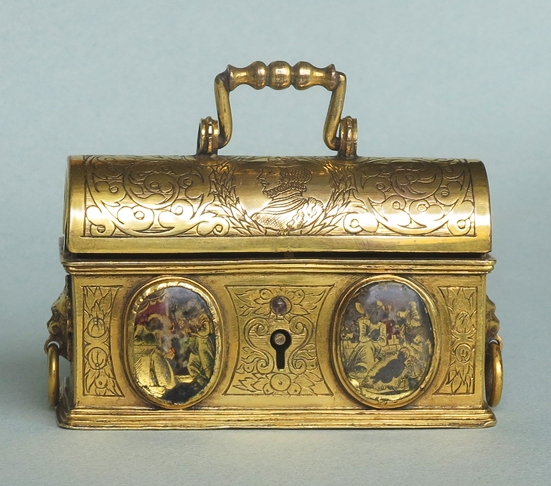
The entire outer surface of the casket is finely engraved with interwoven ribbons, twirls and plant festoons, following a stylistic repertoire very common in the German area.
On the front, between the two ovals and surrounded by a rich decoration, the keyhole houses a delightful miniature key that moves a tiny spring lock, still working. The trilobed key handle follows a typical Southern German model, just like the miniature doorknockers decorating the short sides of the casket: a pair of beautiful leonine masks with a ring in their jaws.
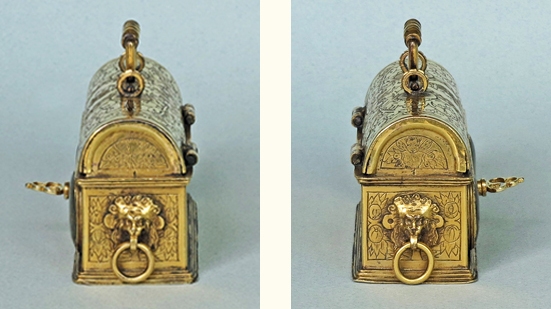
The lid, equipped with a beautiful baluster-shaped handle, is richly engraved: on the lateral lunettes there are two cupids hidden in the vegetation, while centrally there’s a lady in profile within a laurel wreath. The lady is richly dressed according to the Habsburg fashion dating from between late 16th and early 17th century: a high collar, a narrow gorget, the hair gathered in a net and the head crowned by a small hat.
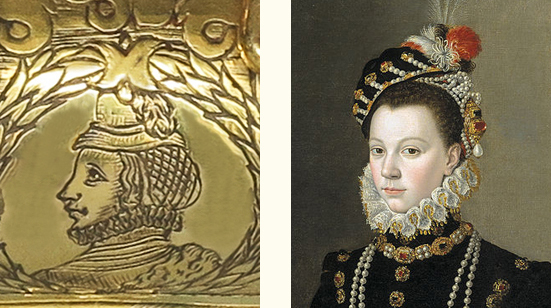
The presence of a female portrait, as well as the iconographic choice of both crystals, related to the theme of motherhood, allow us to understand that the small jewelry box represents a special example of those wedding caskets, widespread in all European regions since the Middle Ages and especially in the German region (where they are known as Minnekästchen, from the German word “Minne” meaning ‘courtly love’): a gift between lovers or newlyweds, used to store jewelry and other personal objects.
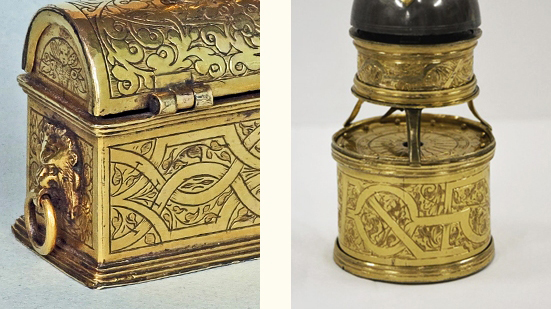
Similarly, the sophisticated decoration of our refined piece finds significant comparisons within the best German goldsmith production, typical of Augsburg and Nuremberg, like, for example, some gorgeous watch cases crafted in that area from the mid-16th century onwards.
Finally, the quality of the two painted crystals is particularly evident in the fine pictorial details, which can be found in similar artefacts, once again from the German area.
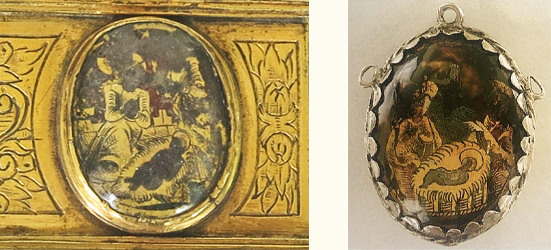
The reverse paintings on glass or rock-crystal, a pre-Roman technique, required a high degree of virtuosity, not only because of the small size of the work surface, but also due to the difficulty of conceiving the painting in the opposite way, i.e. starting from the details and ending with the background. These works were manufactured, in the Renaissance, especially in the Italian and German areas, by artists who achieved expressions of such an excellence that they fed an international trade.
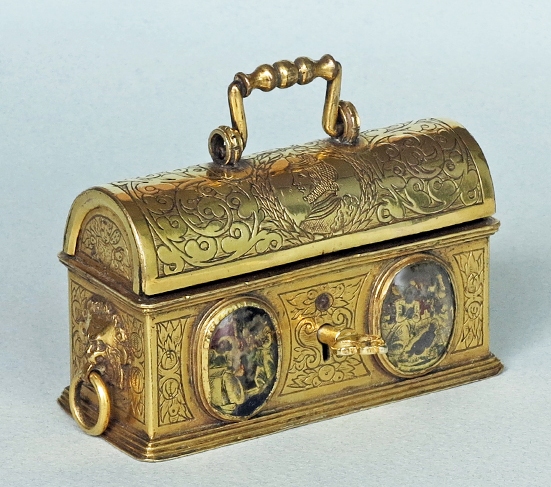
JEWELRY CASKET
Engraved and gilded brass; gilded and painted rock-crystals
Southern Germany (Augsburg or Nuremberg)
Late 16th century
cm. 8,5 x 3,5 x 6,5 h
© 2013 – 2024 cesatiecesati.com | Please do not reproduce without our expressed written consent
Alessandro Cesati, Via San Giovanni sul Muro, 3 – 20121 Milano – P.IVA: IT06833070151